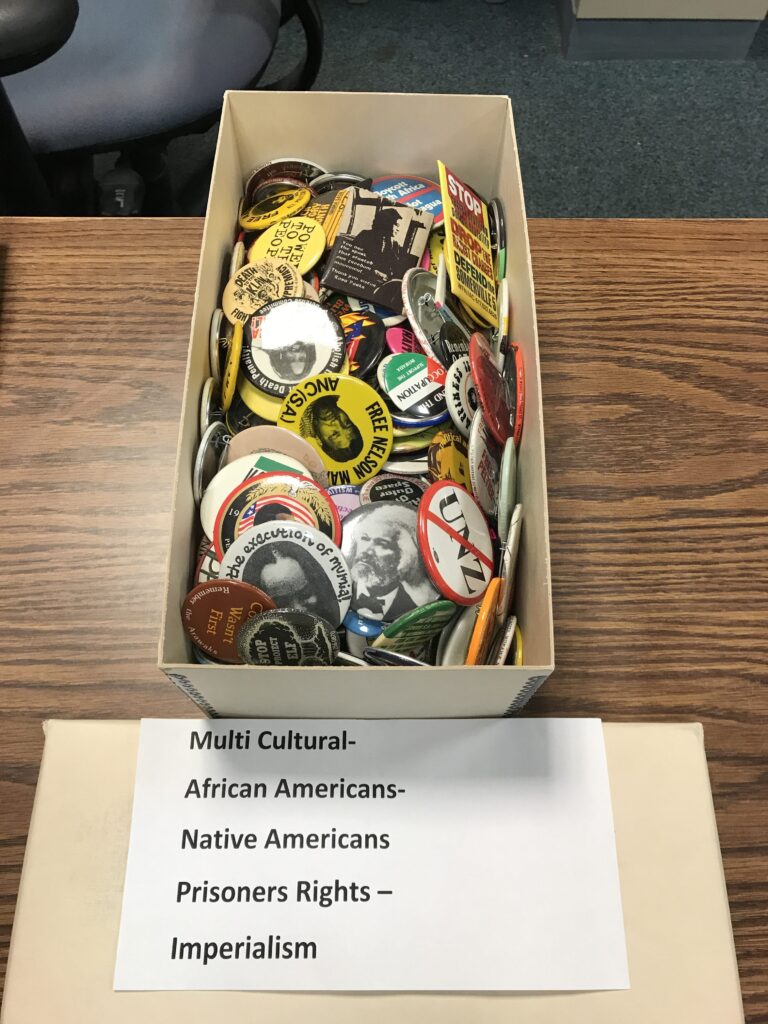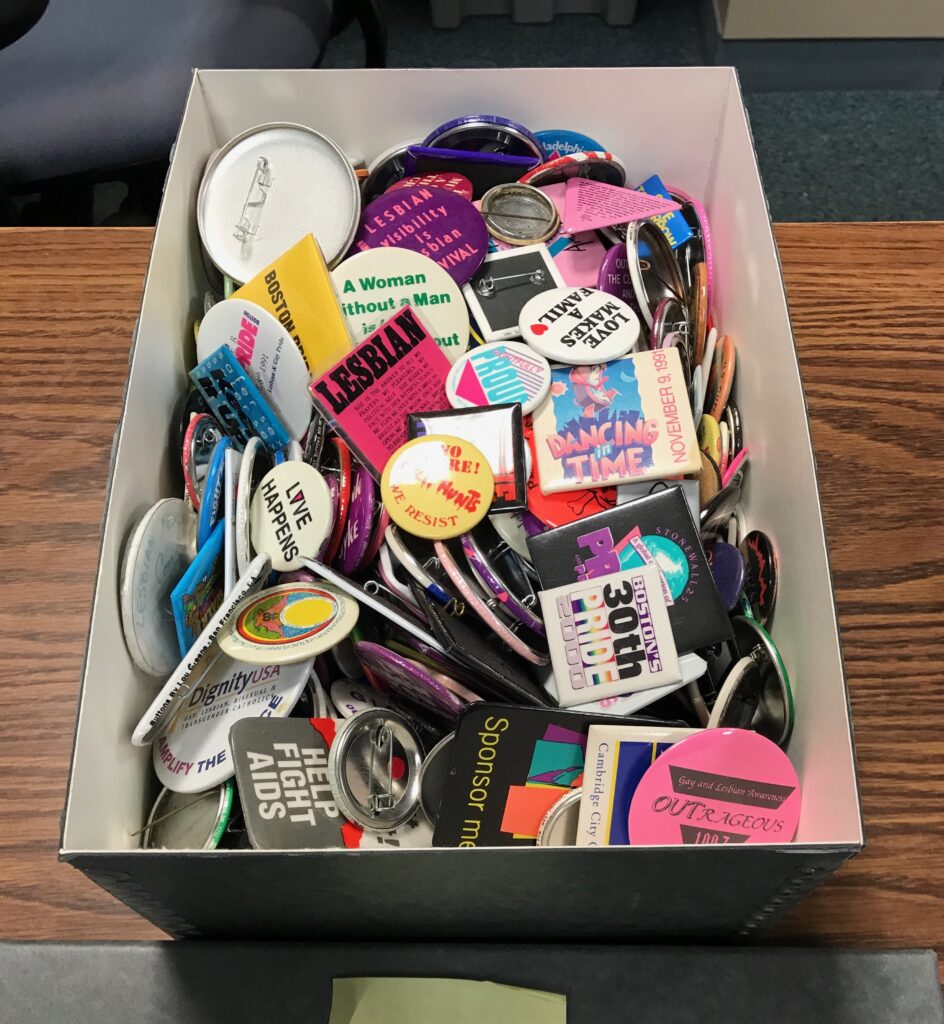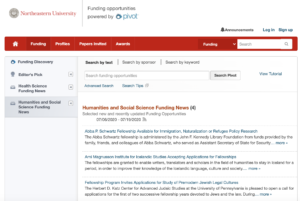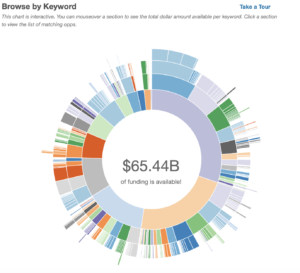Little Buttons, Big Movements: Processing the Mary M. Leno Button Collection

NUASC estimates the collection contains about 5,000 buttons documenting a number of political and social movements, mostly since the 1960s. Original label for this box: “Peace Now; Bombs and Guns; Native Americans.”
Northeastern Archives and Special Collections holds the Mary M. Leno button collection (Z09-016 and Z19-011), a personal collection of about 5,000 items collected by Leno which document a range of social issues and political activism from the second half of the 20th century and early 21st century. The materials in this collection complement other special collections in the repository, and give voice to local, national, and international solidarity movements. The Archives has recently developed a plan to organize and inventory the collection, and is also considering digitization.
The collection consists mostly of pinback buttons featuring text and graphics, as well as enamel buttons, patches, and ribbons. Most buttons with text are in English, but we have also found items in Spanish, Russian, and Japanese. The topics the buttons cover include women’s rights, LGBTQ rights, African-American rights, Native American rights, prisoners’ rights, immigrant rights, civil rights, ecology and environmentalism, health issues, nuclear power, housing and development, war and imperialism, labor issues and unions, media power, consumer rights, and ageism, among other subjects. A large part of the collection consists of American political campaign and political party buttons, spanning back to at least 1916.
Despite spanning such a diverse range of topics, the majority of buttons are undated and typically provide little provenance information beyond manufacturing details. Text or graphics usually give some indication of context, but often we cannot place the buttons in a particular time and place, and know little about their background prior to donation. Because of this lack of context, we have decided to organize buttons by topic to the best of our ability. Most buttons were grouped into loose topics when they were donated. Apart from adding some additional topics and changing some language, we have decided to in large part retain Leno’s original organization of the materials.
One of the most interesting aspects of this collection is how many of the buttons address intersectional issues and activism. Buttons about eco-feminism, housework labor, environmental racism, consumer divestment, AIDS prevention, and political prisoners are just some examples of overlapping movements and topics. To accommodate this, we intend to inventory and record basic information about each button, to help users find specific items they may be looking for across topics. The hope is that this will support the discovery and research of intersectional issues and social movements.
We hope that by processing and enhancing access to the Mary M. Leno button collection, we can help patrons research and discover histories of social and political activism through archival objects. The collection is open for research, and we encourage you to come take a look when the reading room reopens. For more information, please contact us at archives@northeastern.edu.

Buttons arrived at the Archives in several boxes, with multiple topics represented in each box. Original label for this box: “Multi-Cultural; African-Americans; Native-Americans, Prisoners’ Rights; Imperialism.”


